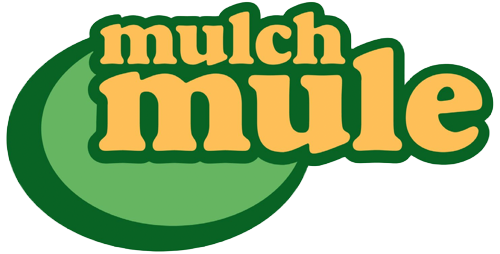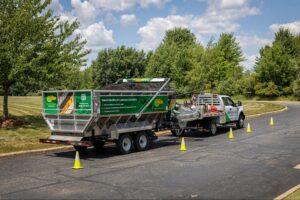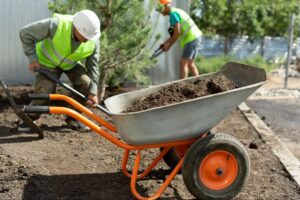In today’s dynamic landscaping industry, embracing eco-friendly landscaping materials is not just an option—it’s a powerful strategy to cut costs, improve efficiency, and reduce environmental impact. By integrating sustainable practices and modern equipment, your business can stand out, meet rising client expectations, and create projects that are both beautiful and responsible.
Using sustainable options—from recycled mulch to permeable pavers—landscaping professionals can enhance project quality, minimize environmental harm, and accelerate work timelines. This comprehensive guide explores innovative eco-friendly materials, practical examples of their transformative use, and how tools like the Mulch Mule trailer can simplify operations and elevate your projects.
What is Sustainable Landscaping?
Sustainable landscaping is about fulfilling today’s needs without compromising the future. It goes beyond simply replacing traditional materials; it involves a holistic approach that conserves water, improves soil health, and minimizes chemical use while enhancing natural ecosystems. Unlike conventional landscaping, which may rely heavily on pesticides, chemical fertilizers, and resource-intensive materials, sustainable landscaping uses local or recycled resources to lower maintenance costs and bolster resilience.
For example, some projects have demonstrated that transitioning from more conventional practices—such as the use of chemically treated sod—to incorporating native plants and organic compost can contribute to improved water efficiency and reduced maintenance needs. This principle underscores the benefits of materials that are better adapted to local conditions and environmentally responsible.
Eco-Friendly Material Choices for Landscaping Projects
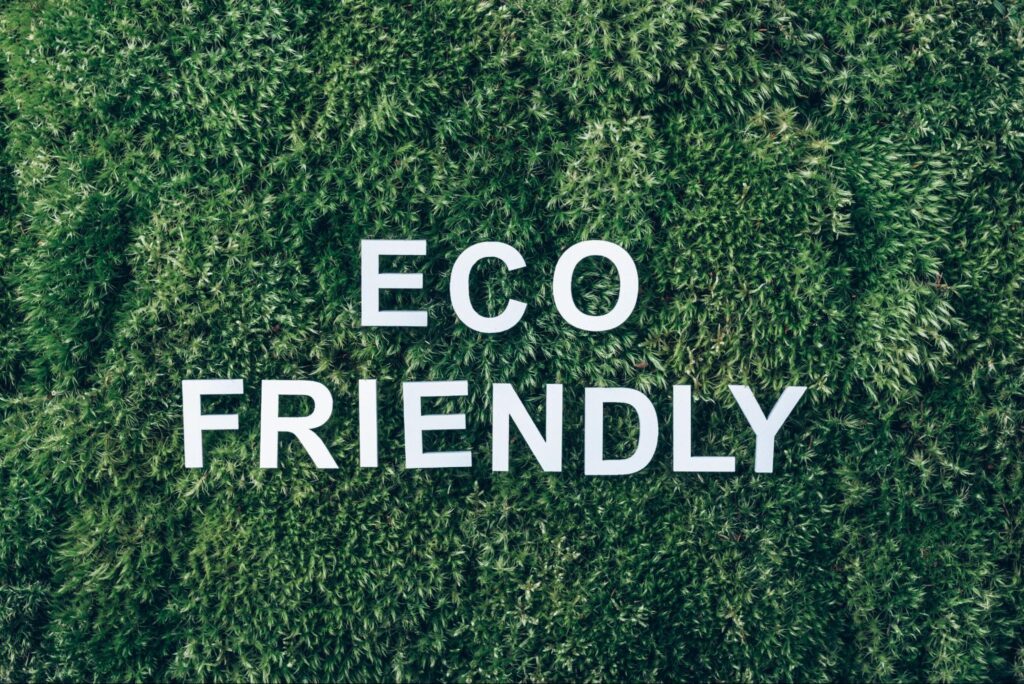
Choosing the right materials is fundamental for sustainable landscaping. The following eco-friendly options have proven effective in transforming landscaping projects:
Recycled Mulch
Recycled mulch is produced from reclaimed wood, green waste, or agricultural byproducts and is an excellent alternative to conventional wood chips. It retains moisture, regulates soil temperature, and suppresses weeds while enriching the soil with beneficial microorganisms.
Imagine a residential community project where the use of high-quality recycled mulch not only enhanced aesthetic appeal but also contributed to improved water retention and reduced irrigation needs.
Native Plants
Native plants are naturally matched to local climates and soils, requiring minimal watering, fertilizers, or pesticides. Their use helps reduce chemical runoff and supports local pollinators like bees and butterflies. For instance, a municipal garden designed with native species thrived with significantly less upkeep compared to traditional ornamental gardens, showcasing vibrant biodiversity while lowering operational expenses.
Permeable Pavers
Permeable pavers mitigate stormwater runoff by allowing rainwater to seep into the ground. This reduces flooding, prevents soil erosion, and aids in groundwater recharge. In a hypothetical commercial plaza redesign, replacing conventional concrete with permeable pavers not only enhanced the area’s aesthetic but also helped to ease stormwater management challenges, aligning the project with modern environmental guidelines.
Additional Sustainable Materials
Other materials that contribute to sustainable landscaping include:
- Organic compost made from green waste to improve soil structure and nutrient content, as outlined by the US Composting Council.
- Reclaimed wood or stone for hardscaping elements such as garden borders, pathways, and decorative features.
- Bio-based products like jute and coir for effective erosion control.
- Regionally sourced materials to shorten supply chains and lower carbon footprints.
Combining these materials strategically can result in landscapes that are robust, attractive, and environmentally responsible.
Benefits of Eco-Friendly Landscaping Practices
Adopting eco-friendly landscaping practices brings a wide range of benefits:
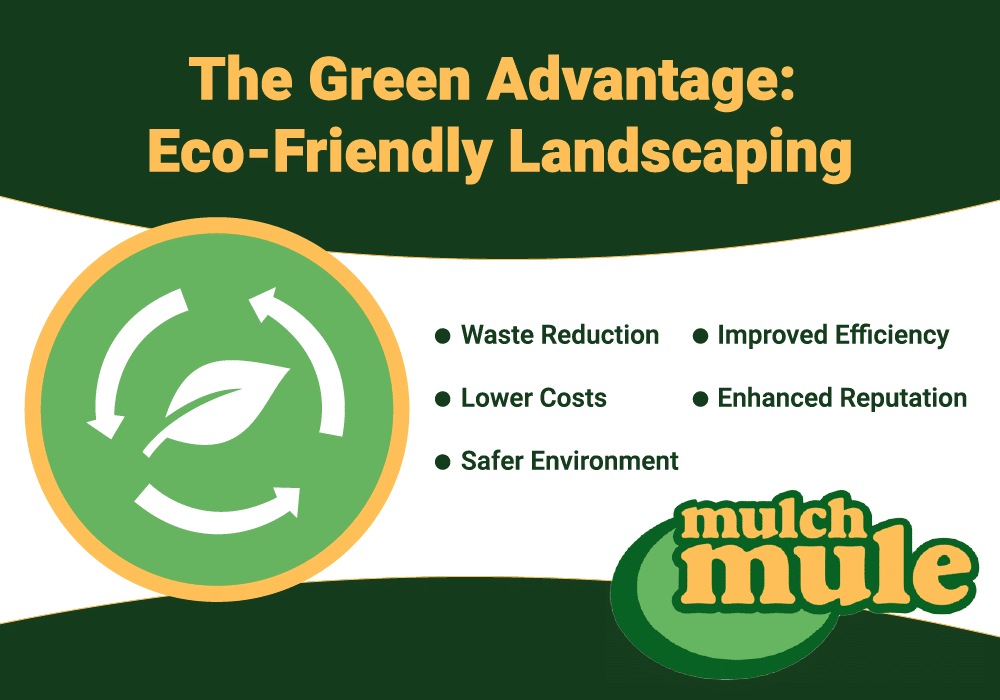
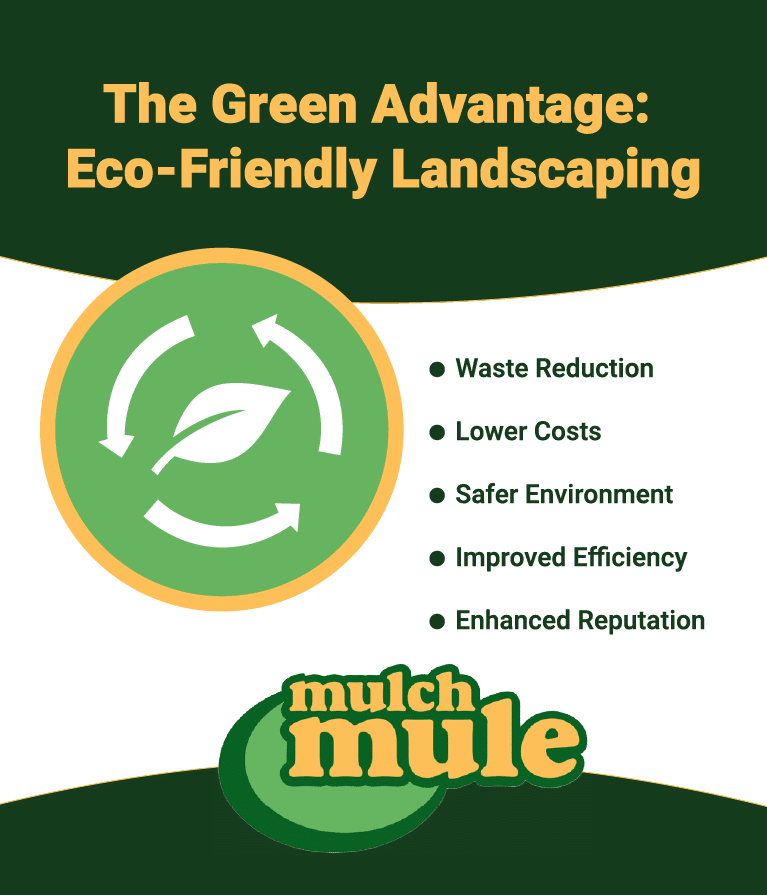
- Reduction in waste and conservation of natural resources through the use of recycled and reclaimed materials.
- Lower long-term maintenance and water costs due to the inherent efficiencies of native plants and permeable systems.
- A decrease in chemical usage, leading to safer environments for both workers and clients.
- Improved operational efficiency through streamlined processes and reduced material-handling challenges.
- Enhanced brand reputation by aligning your business with sustainable and forward-thinking practices.
The EPA WaterSense program also underscores how water-efficient techniques can yield both financial and environmental benefits.
Challenges in Implementing Sustainable Landscaping and How to Overcome Them
Transitioning to sustainable practices can introduce challenges, such as higher initial costs, less readily available materials, and the need for specialized training. However, these hurdles can be overcome with strategic planning:
- While eco-friendly materials might have a higher upfront cost, the long-term savings from lower maintenance, water usage, and fewer repairs often outweigh the initial investment.
- Building relationships with local suppliers ensures a more reliable and cost-effective supply of sustainable resources.
- Offering hands-on training and practical workshops helps your team master new techniques and materials quickly.
- Investing in advanced equipment, such as the Mulch Mule, automates labor-intensive tasks, reducing physical strain and accelerating project timelines.
By addressing these challenges proactively, you can seamlessly integrate sustainable practices into your workflow and enjoy significant operational and environmental advantages.
Measuring Impact of Sustainable Landscaping
An essential component of a sustainable landscaping initiative is the ability to measure its impact over time. Establishing clear metrics is critical for understanding improvements in water efficiency, soil health, and overall project performance. Regular monitoring—using technologies like moisture sensors from the Irrigation Association or soil testing from NRCS Soil Health—provides valuable data for adjusting strategies and optimizing resource usage.
This focus on performance measurement validates the benefits of eco-friendly practices while helping secure environmental certifications and incentives.
Emerging Trends and Future Innovations in Sustainable Landscaping
As the landscape industry continues to evolve, several emerging trends are reshaping how eco-friendly practices are implemented. Developments in data-driven technologies, for example, allow professionals to track soil moisture, nutrient levels, and weather patterns, optimizing the use of green materials. This adaptive approach conserves resources and reduces waste.
Innovative designs are also making headway, such as the incorporation of solar-powered irrigation systems and the use of automated sensors within permeable paving. These systems help detect and circumvent potential drainage issues before they escalate, ensuring that sustainable landscapes remain resilient in the face of climate variability.
Collaboration between landscape designers and environmental engineers is further paving the way for multifunctional spaces that serve both aesthetic and ecological purposes, such as urban rain gardens that double as community gathering areas.
The Role of Mulch Mule in Sustainable Landscaping Projects
Efficient material handling is crucial in sustainable landscaping, and Mulch Mule equipment is designed to meet this need. With features like a live floor system and quick-discharge capabilities, Mulch Mule helps streamline the distribution of materials such as recycled mulch, compost, and aggregates. For example, envision a large park project where a single operator uses the equipment to distribute mulch evenly across landscaped areas in a fraction of the traditional time. This not only shortens project duration but also minimizes physical strain on workers, reducing the risk of injuries and increasing overall productivity.
Moreover, the Mulch Mule’s ability to haul and distribute different bulk materials ensures year-round utility. In the warmer months, it can handle large quantities of compost or mulch for new plantings, reducing labor demands and speeding up job completion. Meanwhile, during autumn leaf cleanups, its optional vacuum debris loader offers a powerful solution for efficiently collecting and disposing of organic waste. Even in winter, the robust design and capacity make hauling sand, or gravel straightforward, ensuring safe and well-maintained walkways and parking lots. Mulch Mule even has dual conditioners that fluffs, aerates, and conditions the mulch and material as it’s being dispensed – making each yard of material go further, which plays a role in sustainable landscaping practices.
This adaptability not only saves time but also strengthens your business’s reputation for reliability.
Increasing Efficiency and Sustainability for Landscaping Businesses
Integrating eco-friendly materials with efficient processes can dramatically boost productivity and set your business apart. Advanced equipment like the Mulch Mule trailer minimizes manual labor, helps maintain consistent project timelines, and lowers the risk of work-related injuries. This alignment not only leads to cost savings but also enables you to take on more projects without compromising quality.
By embracing streamlined processes and sustainable materials, your business can achieve:
- Greater operational efficiency and fewer delays.
- Enhanced safety and employee morale due to reduced physical strain.
- The ability to scale operations while adhering to environmental standards.
- A competitive advantage by appealing to increasingly eco-conscious clients.
Practical Steps to Start Sustainable Landscaping Projects
Implementing sustainable landscaping might seem challenging, but a structured approach can simplify the process. Follow these actionable steps to integrate green practices into your next project:
- Research Local Suppliers: Establish partnerships with reliable regional vendors who offer recycled mulch, native plants, and reclaimed hardscape materials. This not only assures material quality but also minimizes transportation emissions.
- Conduct a Thorough Site Assessment: Evaluate soil conditions, drainage, sunlight exposure, and local climate factors to determine the best materials and designs for your project. Tailor your strategy to maximize the natural strengths of each site.
- Design with Sustainability in Mind: Create plans featuring grouped plantings based on similar water needs, the use of pollinator-friendly species, and efficient water management solutions like permeable pavers. A design that works in harmony with nature helps reduce resource consumption and maintenance efforts.
- Provide Training for Your Team: Ensure that your crew is well-versed in modern, sustainable landscaping techniques. Hands-on training, workshops, and accessible tutorials can improve technique and operational efficiency when handling new materials.
- Invest in the Right Equipment: Incorporate tools like the Mulch Mule trailer to automate labor-intensive tasks. Its advanced features significantly reduce the physical burden on workers and streamline material distribution processes and make material go further.
- Monitor and Evaluate Performance: Track key metrics such as water usage, labor hours, and project timelines to assess the effectiveness of sustainable practices. Use this data to optimize processes and reinforce the benefits to your clients.
Advantages of Sustainable Landscaping for Businesses
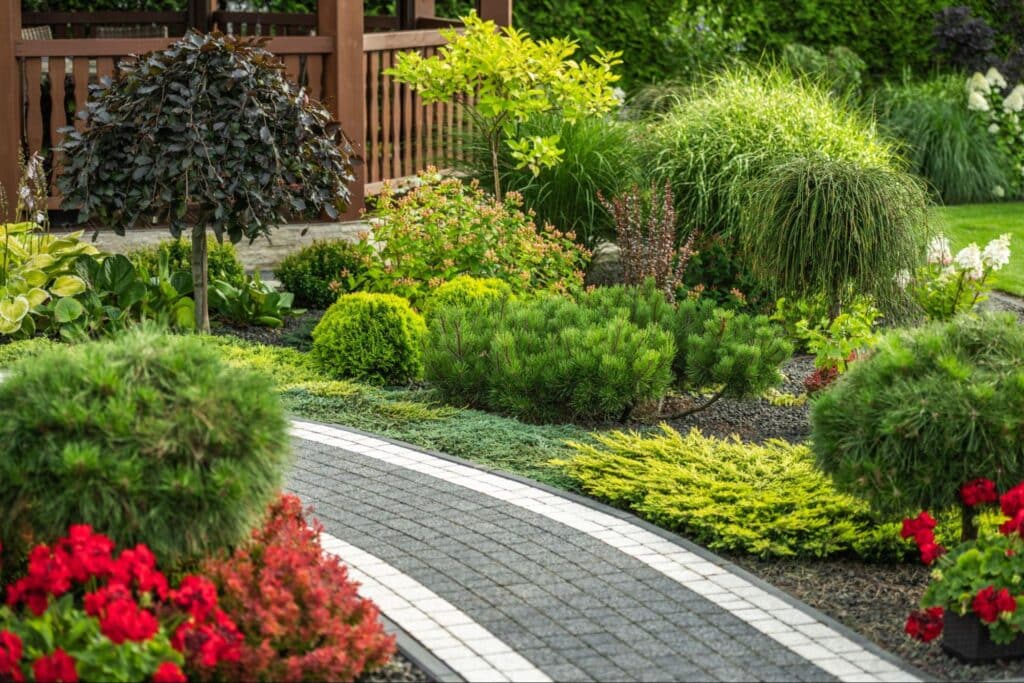
Sustainable landscaping offers a host of advantages that positively impact both operations and brand image:
- Competitive Differentiation: Eco-friendly landscapes attract environmentally conscious clients and set your business apart as a visionary leader.
- Cost Efficiency: Reduced water consumption, lower maintenance expenses, and durable materials contribute to significant long-term savings.
- Regulatory Compliance: Adopting sustainable practices can help your business align with environmental regulations, potentially unlocking incentives and rebates.
- Improved Safety and Morale: Advanced equipment minimizes manual labor, enhancing worker safety and job satisfaction.
- Community Impact: Green practices contribute to healthier local ecosystems, building a reputation for corporate responsibility that resonates with today’s consumers.
Choose Eco-Friendly Landscaping Materials and Advanced Equipment
Eco-friendly landscaping materials are the cornerstone of modern, sustainable, and cost-effective landscaping projects. By integrating recycled mulch, native plants, permeable pavers, and other green materials, you not only conserve natural resources and enhance biodiversity but also build a resilient, high-quality landscape that can lead to measurable improvements in water efficiency and maintenance.
Coupled with innovative tools like Mulch Mule, which streamline material handling and reduce waste, labor demands, these practices can revolutionize your operations. The synergy between sustainable materials and advanced equipment paves the way for higher productivity, improved safety, and a competitive edge in today’s eco-conscious market.
Ready to supercharge your projects? Embrace the future of landscaping by incorporating eco-friendly practices and cutting-edge equipment into your workflow. Contact Mulch Mule today to schedule a live demonstration or learn more about how our solutions can help you build a greener, more efficient future.
